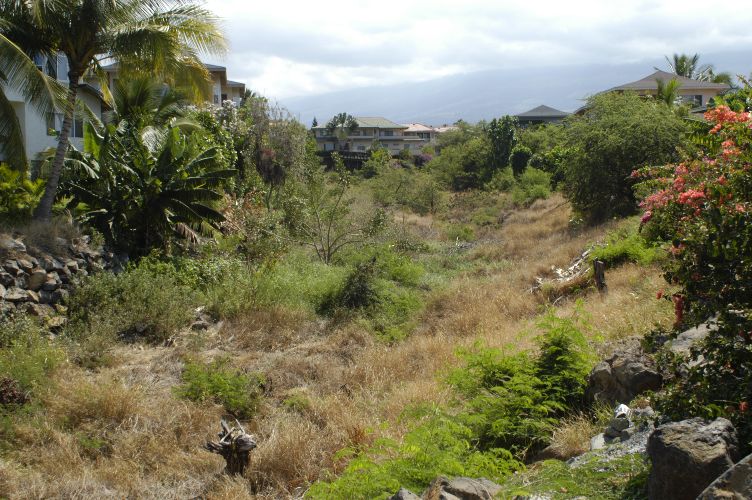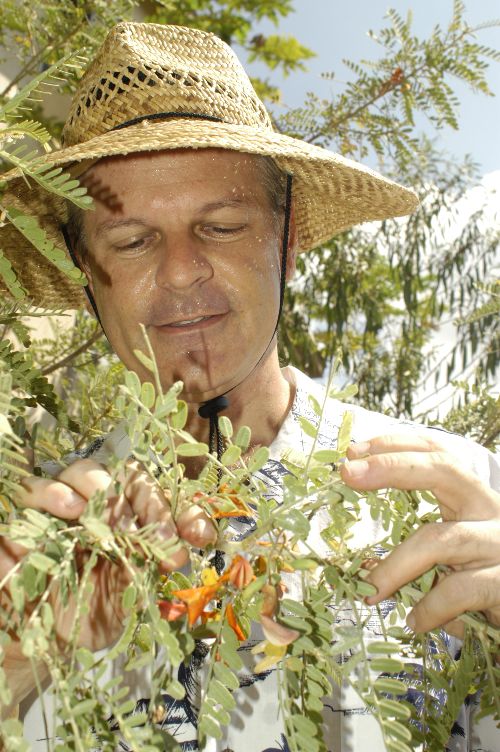News, Opinion,
Entertainment, and Culture
News, Opinion,
Entertainment, and Culture

By: Shannon Wianecki
Imagine you are a mere California tarweed seed, hoisted into the air and
blown by a restless wind 3,000 miles across the Pacific Ocean. By some lucky
chance, you fall onto the new soil of the Hawaiian Islands. You have found plant
heaven--little competition and few predators. You settle into your new home,
shed now-useless barbs, thorns, and propellers, and over tens of thousands of
years, you creep up mountains and into valleys, evolving into thirty species
filling every niche you stumble upon. From a lowly tarweed with wanderlust,
you have grown into the mighty Silversword Alliance.

This story describes many of the plant and animal species found in Hawai'i before the arrival of humans. For 70 million years, these islands evolved in isolation. On the average, a single species every 35,000 years survived the journey and successfully established itself here. They came in the muddy feet of seabirds, marooned atop ocean debris, and in strong gusts of wind which span oceans. After arriving they began to evolve. Adapting to their new home--an island chain boasting of ecological zones from rainforest to alpine desert-the first Hawaiian residents developed new, fascinating characteristics distinguishing them from their ancestors. A rather drab-looking finch evolved into forty species of spectacular honeycreepers. The radically curved bill of the I'iwi perfectly fits into the blossom of another pioneer, the lobelia. This phenomenon, an example of adaptive radiation, makes Hawai'i an unparalleled showcase for evolutionary study.
A bit of old Hawai'i is sprouting up in a South Maui gulch. Hidden in a Kihei suburb, rare native plants are staging a comeback thanks to the efforts of UH Manoa Computer Science Professor, Lee Altenberg. After the hot sun subsides, around five p.m., Altenberg can be seen knee-deep in koa haoles and buffel grass, yanking them by the root while coaxing his transplanted natives to grow in their stead.
"I call it 'Lee's Gym'," Altenberg jokes, "Twenty five dollars buys you a
pick and a lifetime membership. I get at least an hour's workout each day."
More than muscles, Altenberg is building a legacy--a stand of native dry land
forest largely extinct in Hawaii. The gorgeous, orange-blossomed 'ohai sending
branches across Altenberg's gulch represents a rare treasure. When biologists
discovered 'ohai, an endemic member of the pea family in 1992, only thirteen
plants remained in the wild. Eaten up by cattle and crowded out by alien species,
South Maui plants such as 'ohai disappeared almost entirely. Very few people
living in Hawai'i have an idea of what a native dry land forest looks like.
Lee Altenberg and his peers are changing that.

Lee's vision is an eventual canopy of native trees that will span the length of Li'iliholo gulch--from Kamaole point to Pi'ilani highway. While it is privately owned, the gulch can never be developed because it is in a flood path. So for Altenberg to begin realizing his dream, all he needed to do was convince the neighbors to let him replace their backyard weeds with natives and start planting!
His efforts thus far have been successful. After just one year his plants are thriving. Alongside the 'ohai grows mature wili-wili trees, nai'o and ma'o bushes, nehe flowers, and 'anunu vines. Most of these plants have Hawaiian cultural significance. The fragrant shrub nai'o (also called false sandalwood) was infamously used by the Hawaiians as a substitute in the Chinese sandalwood trade. Its honey sweet aroma fills Li'iliholo gulch and attracts pollinators. Ma'o, a native cotton plant, was employed in dye-making. More recently mainland cotton farmers used ma'o to rescue their crops with Hawaiian genes. Crossbreeding the cottons produced a pest-resistant strain.
Altenberg uses Ma'o in another way. "It's my 'tank'," he says. "Super drought-hardy". To reclaim the gulch, Altenberg must rid it of the alien buffel grass, and then provide shade cover for native seeds. On the front lines of reforestation, Ma'o does the trick. Beneath its protective cover, small aeia and halapepe trees can be seen struggling upwards. To a student of native biology this is a miracle; these plants, specially adapted over thousands of years to inhabit this place, have not grown here in a century.
Still, some people cannot fathom why a college professor would want to spend his free time doing backbreaking work in other peoples' yards. Some of his plants look more like weeds than the weeds themselves. Are they worth the effort? Why?
"They may look like weeds--but always with some extraordinary twist," Altenberg counters. "An unearthly quality that hints that these are no ordinary plants. The dry land forest plants native to Kihei tend to be shrubby, woody, and eccentric--twisting, climbing, arching into shapes completely different from the standard 'tropical' landscaping used everywhere. Shapes that evoke not the image from a real estate magazine, but the memory of a lost world."
And scientists internationally agree with him. Not only are these plants eccentric, they are endemic to Hawai'i (meaning they originated and exist naturally only here). Some are endemic to the island of Maui, and even to a specific valley or gulch. For this reason, Altenberg recruits seeds from the native plants nearest to his gulch. This intense, local "uniqueness" makes them precious to the study of how species develop and survive. Biologists in Hawai'i daily discover unrecorded species and startling new patterns of life.
Altenberg's professional career also depends on this study, in a somewhat unexpected way. At UH, he specializes in evolutionary computation--applying theories of natural organisms to computer programming. He teaches computers to crossbreed designs and, according to Darwinian principles of selection, how to choose the fittest. The same dynamics governing the plants in his gulch are applicable in the computer lab. And who can say where else these theories may be found significant?
While he waters the plants and hacks back the weeds he insists his project is not a garden, it is a forest. He points to a wili-wili "volunteer", a native tree that has sprouted independently and now stands more than ten feet tall. A native sedge creeps ambitiously up a storm drain, out-competing an alien grass. Overall, Altenberg's plants have had a high (90%) survival rate. One day his vision of self-propagating native forest plants may just come true. And why not? They spent tens of thousands of years adapting specifically to this place; they belong here.